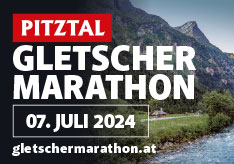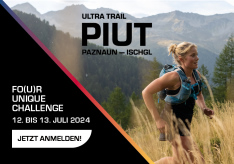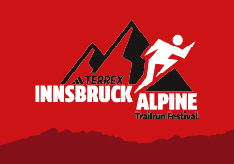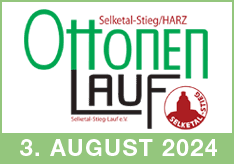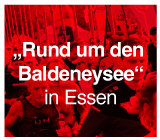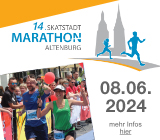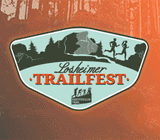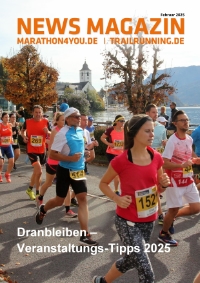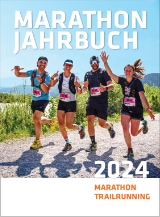marathon4you.de
Nothing is impossible (english Version)
Ahead I see Ramen and Udon, a restaurant that sells the typical Japanese noodle soups; the cheaper alternative to satisfy the hunger. Also on the menu, the Chanko-nabe, a rich vegetable stew which is the favorite dish of the Sumo wrestlers. We can’t decide. An hour later we find ourselves in a restaurant pointing at a picture on the wall, a big bowl of soup with a type of macaroni and egg. Kay takes the macaroni and I a rice dish. With chop sticks and food in hand we make our way over to a round table where locals are sitting. They don’t take any notice of us when we sit down, but just continue slurping noisily at their soup. We are served with water and steaming, perfumed green tea that is free with every meal. Whatever you do, don’t help yourself. Kay poured my tea and I his. In Japan this is customary. The smell of the food that stifles the air makes my nose start to tickle. Kay offers me a tissue. I stab my chop sticks into my rice and hastily make my way to the rest rooms. Even blowing your nose in public is seen as rude, just as it is back-home. Even still, without knowing, I managed to embarrass myself by leaving my chop sticks in my food; this is done only in memory of the dead!
This strange world of mysterious letters, pronounced polite rituals, and a Buddhist like serenity, combined with the fast paced, high technology jungle fascinated us. At home the horrified questions from our families and friends: “Where are you going, to Japan?” “Is Tokyo safe?”; “is it dangerous there?”; “The earthquakes?”; “The radiation?”; “What about the food and the water?” The questions are of course legitimate and are on our minds too. After all, it is soon the anniversary of the cataclysmic Tsunami and the reactor meltdown. The “Japan Times” publishes daily a radiation map. Today, in Fukushima radiation is at 2.56 micro-sievert per hour. In Tokyo it's 0.058 micro-sievert. Interestingly, in Berlin the partner city to Tokyo the reading is 0,070-0.079. Is this a reason not to visit Berlin? And: nowhere else in the world do the people live as long as they do in Japan. That can't be a fluke, can it? Who knows, maybe we can find out the mystery behind the 100 year olds.
The Friendship Run as warm up to the marathon
The early bird catches the worm. We really tried to sleep, but we just couldn’t . It’s Saturday, and after being awake for 35 hours, we could only sleep for 6. Outside the noises were foreign to us: Hehai je juha ja eh he hai komesamai. In 1461 an invisible wall surrounded Japan. For over 1,000 years the country always endeavored to promote peace, however, due to internal and external conflicts there was constant warfare. The country was exhausted and laid waste to the Imperial City. After William Adams death, contact to people from overseas was kept to a bare minimum. The advice of Williams persuaded the Shōgun to distrust Europeans. This was done to such an extent that he and his successors through the Edo Period isolated themselves. It took more than 200 years before a foreigner set-foot on Japanese soil. “Gaijin” (non-Japanese, or alien), and a little more polite, “Gaikokujin”, (foreigner). Today, a blond ponytail like mine attracts no further attention. Only a Swiss girl who travelled here with her husband and was taking part in the Friendship run commented on my hair style.
It only rains an average of 7 days in February in Tokyo and today is one of them. It pours vertically and all the more remarkable that approximately 1,000 overseas runners anchor in the starting area of the Meiji Shrine.
We are tired, freezing and our teeth chatter uncontrollably. With umbrellas, we decide to walk the 2 short rounds of the friendship run, totaling 2 Kilometers. As with most large events the runners are guided into start blocks. The tree tops in the neighboring park appear to salute us in our quest. Despite the inclement conditions the atmosphere is good and the participants are having fun. The course passes the Olympic park where the 1964 games were held and past one of the many golf courses that Tokyo has to offer, before eventually the high rises of Shinjuku dominate the panorama.
One could quite clearly identify the nationality of some of the runners by their dress. French, Dutch, Italians, and so on. A small German flag decorates my socks. I can hardly believe we are here in a port city where in years gone by there were water ways which have since been replaced with motorways. If it rains anymore today motorways will revert back to rivers of water! Before we get washed away we make our way to registration to pick up our start numbers. This takes us through the finish line at the Meiji-Shrine. This was built in 1912 to honor Emperor Meiji and his wife and during the second world war was almost completely destroyed before being rebuilt in 1958. Unfortunately, it lacks the flair of the old shrines and temples that can be found throughout Japan and Tokyo. It is worth mentioning that every year over the New Year festivities millions of people pilgrimage to this famous building. Here, as promised, the awaited breakfast.
Just follow the queue ahead. First we are given a paper bag. The content; a bottle of water, a bottle of ISO, a banana, 2 chocolate rolls and an energy bar. Now we are handed a paper cup in which we can choose either coffee or green tea. The rain runs off the umbrella like on a lotus leaf and so we are spared wet clothes. However, our shoes are soaked through and our feet cold. It is time to move on.





 Tokio Marathon
Tokio Marathon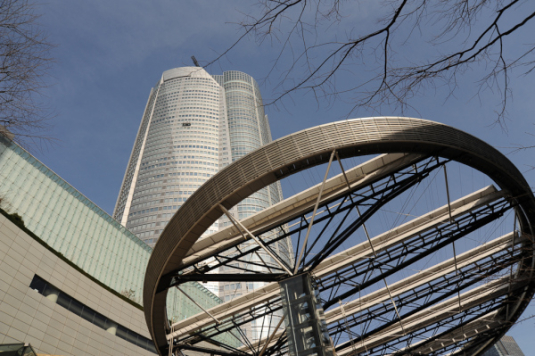

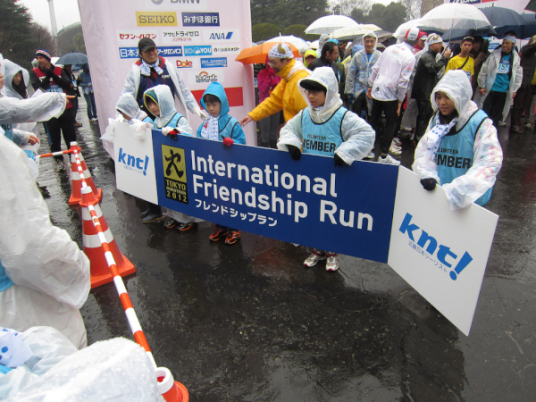




 zur�ck zur �bersicht
zur�ck zur �bersicht